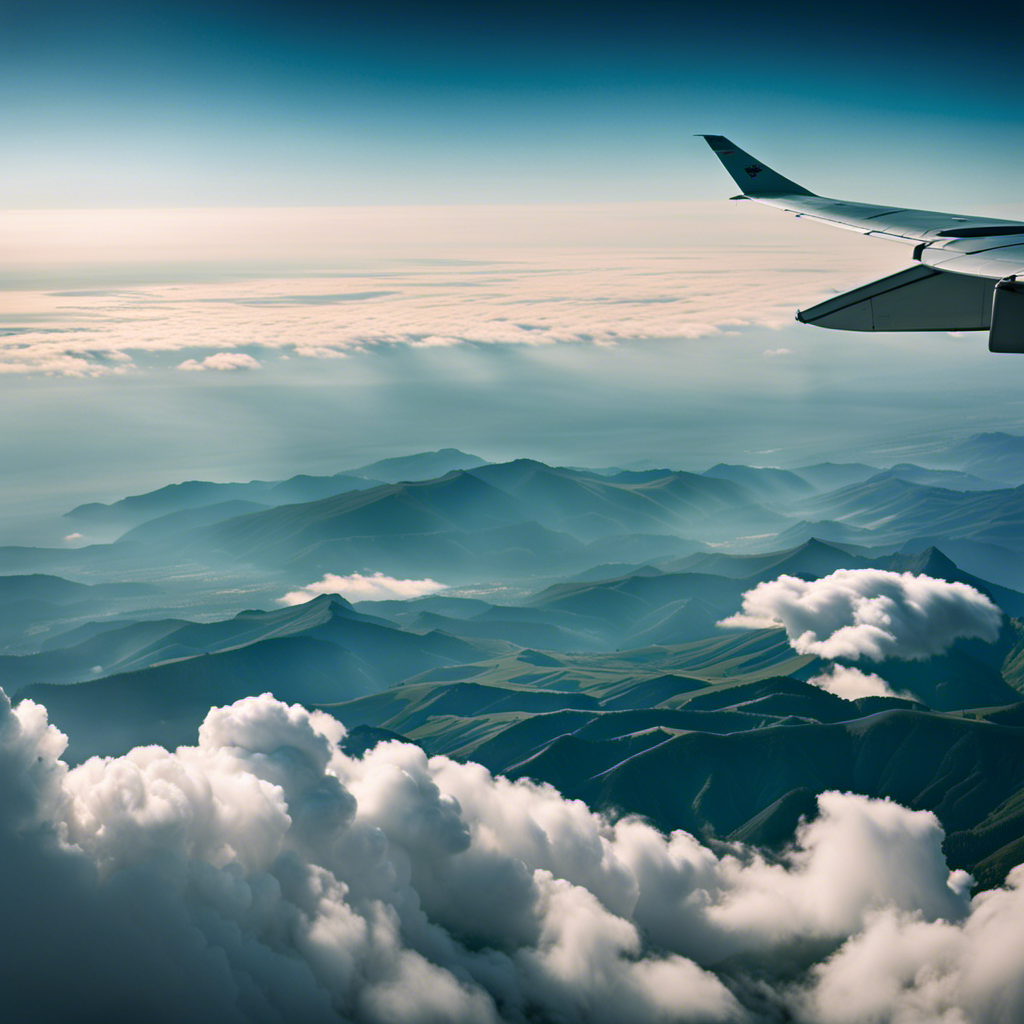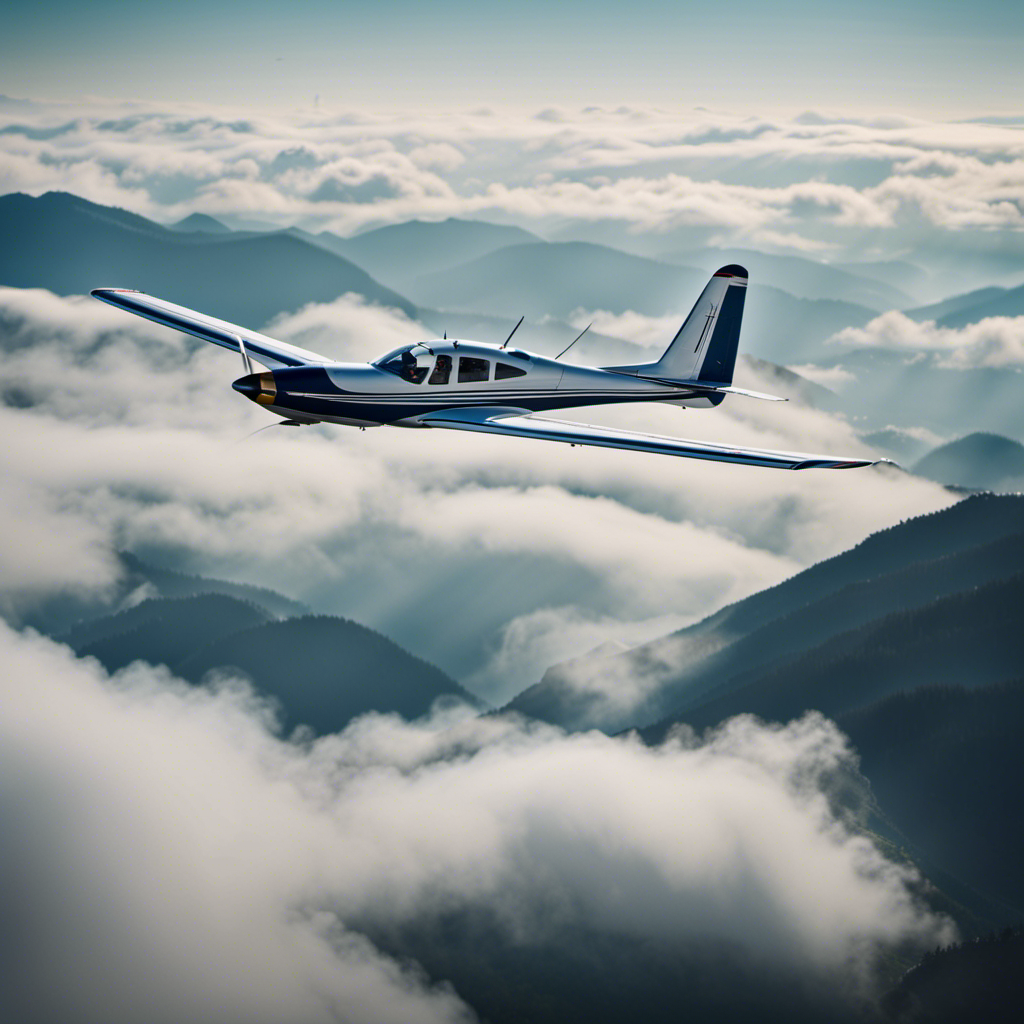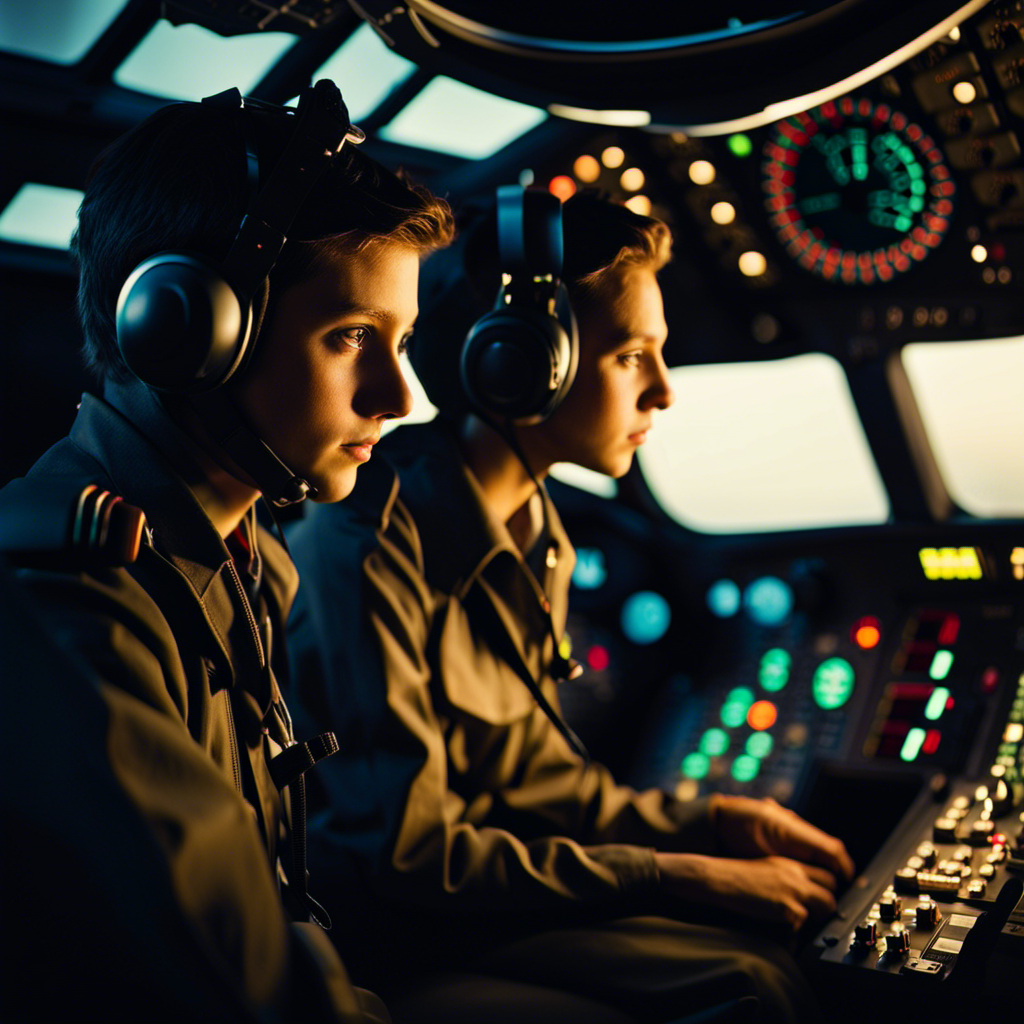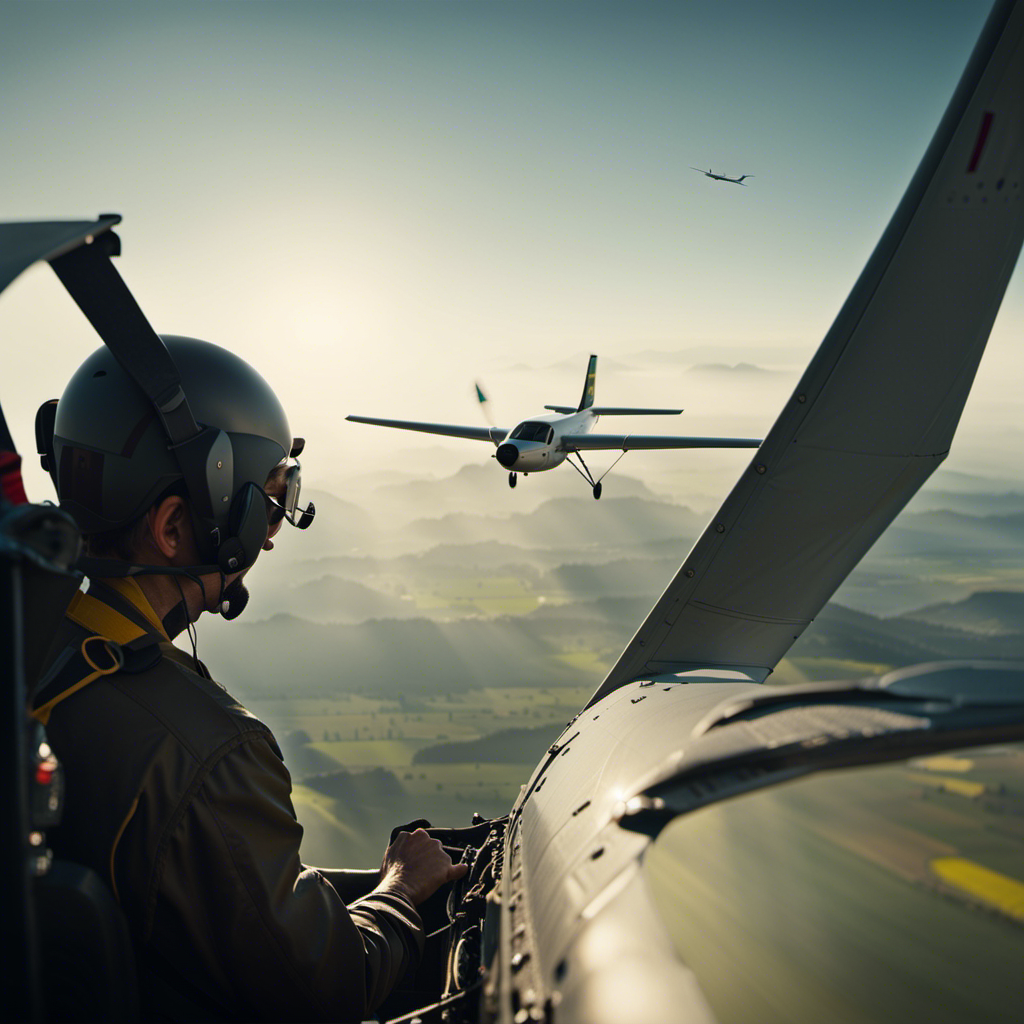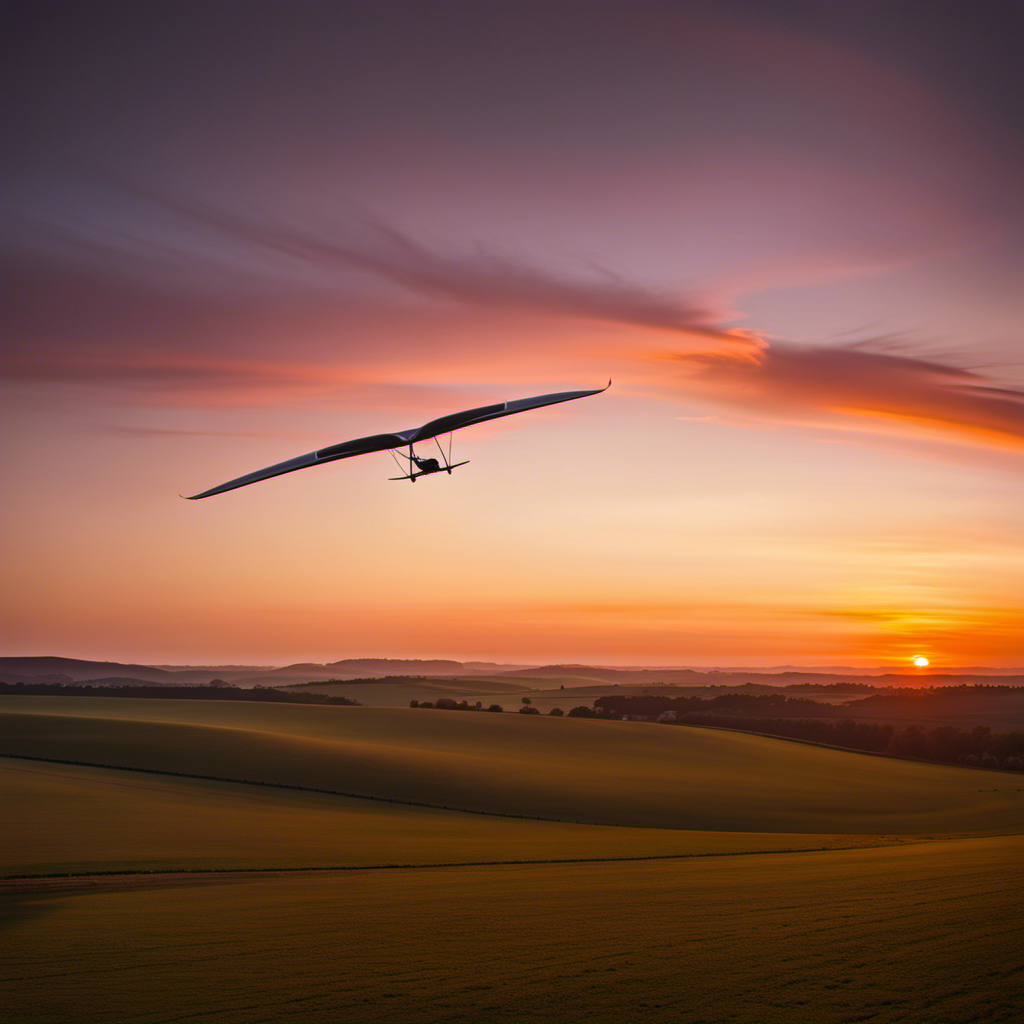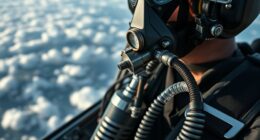Have you ever thought about the feeling of defying gravity?
Well, get ready to be amazed, because in the world of aviation, glide is like floating on air. Yes, you heard that right – glide allows aircraft to soar through the skies without the need for engines.
It’s a skill that pilots master, harnessing the forces of lift and drag to maintain flight.
So, buckle up and prepare to dive into the fascinating world of glide in aviation.
Key Takeaways
- Gliding is a form of aviation that relies on natural forces and does not require an engine.
- Safety is of utmost importance in gliding, including understanding weather conditions, using safety equipment, and following proper training and measures.
- Gliders and sailplanes come in various shapes and sizes, providing a serene and peaceful flying experience with a greater connection to nature.
- Future developments in gliding technology aim to improve aerodynamics, use innovative materials, enhance cockpit instrumentation, and incorporate integrated parachute systems for increased efficiency, safety, and performance.
Introduction to Aerodynamics
In aviation, understanding the basics of aerodynamics will help you grasp the concept of glide and how it works.
Aerodynamics is the study of how air flows around objects, such as an aircraft. When an aircraft is in glide, it is in a state of controlled descent, where it is not powered by engines but instead relies on the forces acting on it.
There are two main forces at play during glide: lift and drag. Lift is the force that opposes gravity and keeps the aircraft airborne, while drag is the resistance the aircraft encounters as it moves through the air.
These forces work together to allow an aircraft to maintain its glide and control its descent.
Now, let’s delve deeper into lift and drag forces and how they affect the glide of an aircraft.
Lift and Drag Forces
You can feel the lift and drag forces as you glide through the air. It’s a fascinating experience, and understanding these forces is crucial in aviation. Here are three key points to help you grasp the concept:
-
Lift: This force acts perpendicular to the direction of motion and opposes the force of gravity. It allows an aircraft to stay in the air. Lift is generated by the shape of the wings and the speed of the aircraft.
-
Drag: This force acts parallel to the direction of motion and opposes the forward movement of the aircraft. It’s caused by air resistance and can be minimized through streamlined designs and reducing the aircraft’s speed.
-
Balance: Achieving a balance between lift and drag is essential for efficient flight. A well-designed aircraft creates enough lift to counteract its weight and produces minimal drag to maintain forward motion.
Understanding lift and drag forces is fundamental to explaining the concept of glide, which we will explore in the next section.
Definition and Explanation of Glide
Understanding the concept of glide is crucial for pilots to efficiently maintain forward motion in flight. Glide refers to the ability of an aircraft to descend through the air while maintaining a relatively constant forward speed.
When an aircraft is in glide, it is not producing any thrust and relies solely on the forces of lift and drag to sustain its motion. By carefully managing these forces, pilots can control the rate of descent and the distance covered during a glide.
To achieve an optimal glide, pilots must balance the lift and drag forces to minimize the rate of descent while maximizing the distance traveled.
Now let’s delve into the science behind gliding and explore the factors that influence an aircraft’s ability to glide effectively.
The Science Behind Gliding
To effectively understand the science behind gliding, it’s important to examine the principles of aerodynamics and how they apply to the concept of sustained flight without propulsion. Gliding is achieved by utilizing the forces of lift, gravity, and drag to maintain forward motion and stay aloft. Here is a table that breaks down these forces and their effects on gliding:
| Force | Direction | Effect on Gliding |
|---|---|---|
| Lift | Upwards | Provides upward force to counteract gravity and keep the aircraft in the air. |
| Gravity | Downwards | Pulls the aircraft towards the ground, creating a downward force that contributes to the descent. |
| Drag | Opposite to the direction of motion | Acts as a resistance against the forward motion, slowing down the aircraft and reducing the glide distance. |
Understanding these forces is crucial in analyzing the factors that affect glide performance, which will be explored in the next section.
Factors Affecting Glide Performance
When assessing factors that impact glide performance, it’s crucial to consider variables such as air density, wind speed, and aircraft weight. These factors can greatly influence how far and how efficiently an aircraft can glide.
-
Air Density: The density of the air affects the lift generated by the wings. Higher air density provides more lift, allowing the aircraft to glide longer distances.
-
Wind Speed: The direction and speed of the wind can either assist or hinder the glide performance. A headwind reduces groundspeed and extends glide distance, while a tailwind can decrease glide performance.
-
Aircraft Weight: The weight of the aircraft affects its glide ratio. Lighter aircraft have a better glide ratio, allowing them to cover more distance in a glide.
Understanding these factors is essential for pilots to optimize their glide performance and make informed decisions during flight.
Now, let’s explore the different types of gliding.
Types of Gliding
Take a moment to explore the various types of gliding and understand how each one offers a unique experience in the sky.
Gliding is not limited to just one method, but rather encompasses a range of techniques that allow pilots to soar through the air without the need for an engine.
One popular type of gliding is called ridge soaring, where pilots use the wind that hits a hill or mountain to stay aloft.
Another type is called thermal soaring, where pilots use rising columns of warm air to gain altitude.
And then there’s wave soaring, where pilots ride on the upward motion of air caused by mountains or other obstructions.
Each type of gliding requires its own set of skills and techniques, which we’ll explore in the next section.
So let’s dive into the world of gliding techniques and maneuvers.
Gliding Techniques and Maneuvers
You can easily master various gliding techniques and maneuvers by understanding the specific skills required for each type. For example, when practicing thermaling, it’s crucial to learn how to locate and exploit thermal updrafts to gain altitude.
To execute a perfect landing, you must become adept at judging the approach angle and controlling the airspeed. In addition, mastering ridge soaring involves skillfully utilizing the wind patterns and understanding how to stay in lift for prolonged periods.
Another important technique is speed control, where you need to maintain the optimal airspeed to maximize glide distance. By honing these skills, you will become a proficient glider pilot, able to confidently navigate the skies with precision and finesse.
Now, let’s delve into the essential aspects of gliding safety and training.
Gliding Safety and Training
To ensure safety and proper training in gliding, it’s important to familiarize yourself with the necessary emergency procedures and protocols. Gliding may seem peaceful, but being prepared for any unforeseen circumstances is crucial.
Before taking off, make sure you know how to handle emergency landings and navigate through various weather conditions. Understanding the proper use of safety equipment, such as parachutes and emergency radio communication, is also essential.
Additionally, you should undergo thorough training to develop your skills in gliding, including learning how to perform aerotow launches and managing the glider’s controls effectively.
By following these safety measures and acquiring the necessary training, you will be well-prepared to enjoy the exhilarating experience of gliding.
Now, let’s delve into the fascinating world of gliders and sailplanes.
Gliders and Sailplanes
Gliders and sailplanes provide a unique and thrilling experience for aviation enthusiasts. These aircraft are designed to fly without an engine, relying solely on the forces of nature to stay aloft.
Gliding allows you to experience the pure joy of flight, as you soar through the sky with grace and precision. Unlike powered aircraft, gliders offer a serene and peaceful experience, with the only sound being the wind rushing past your wings. The feeling of freedom and the connection with nature is unparalleled.
Gliders and sailplanes come in various shapes and sizes, each with their own unique characteristics. From sleek and aerodynamic designs to rugged and versatile models, there is a glider for every type of pilot.
As technology continues to advance, future developments in gliding technology will further enhance the performance and safety of these remarkable aircraft.
Future Developments in Gliding Technology
Future developments in gliding technology will continue to enhance the performance and safety of these remarkable aircraft. Glider manufacturers are constantly pushing the boundaries to make gliders more efficient and capable. Here are some exciting advancements to look forward to:
-
Improved aerodynamics:
-
Advanced wing designs that reduce drag and increase lift.
-
Innovative materials that are lighter, yet stronger, improving overall performance.
-
Enhanced safety features:
-
Upgraded cockpit instrumentation, providing pilots with real-time data and alerts.
-
Integrated parachute systems, offering an additional safety measure in case of emergency.
These advancements will not only make gliders more efficient and maneuverable, but they will also make them safer to fly. As technology continues to evolve, gliders will become even more sophisticated, allowing pilots to explore the skies with confidence and grace.
Frequently Asked Questions
How long can a glider stay in the air without any power source?
A glider can stay in the air without any power source for hours, depending on various factors like weather conditions and the skill of the pilot. It relies on air currents and the principle of aerodynamics to maintain flight.
Are there any specific weather conditions that are ideal for gliding?
Ideal weather conditions for gliding include clear skies, light winds, and stable atmospheric conditions. These conditions provide smooth air currents, allowing gliders to stay aloft longer and maximize their glide ratio.
What is the maximum distance that a glider can cover in one flight?
A glider can cover a maximum distance of hundreds of miles in one flight. Gliders are designed to have minimal drag and maximize lift, allowing them to fly long distances without an engine.
Can anyone learn to glide, or are there any age or physical limitations?
Anyone can learn to glide, regardless of age or physical limitations. Picture yourself soaring through the sky, effortlessly riding the air currents. With proper training and guidance, you can experience the thrill of gliding firsthand.
Are there any regulations or restrictions for gliding in different countries?
In different countries, there may be regulations or restrictions for gliding. It’s important to check with local aviation authorities to ensure compliance with any specific rules or requirements before engaging in gliding activities.
Conclusion
So there you have it, my friend – the magnificent world of gliding in aviation.
With its graceful maneuvers and mastery of the air, gliding is truly a sight to behold.
From the science behind lift and drag forces to the factors affecting glide performance, we have delved deep into the intricacies of this art form.
As technology continues to advance, we can only imagine the breathtaking future developments that await us in the world of gliding.
So buckle up and prepare for a journey like no other, as you soar through the skies with the elegance of a glider.
